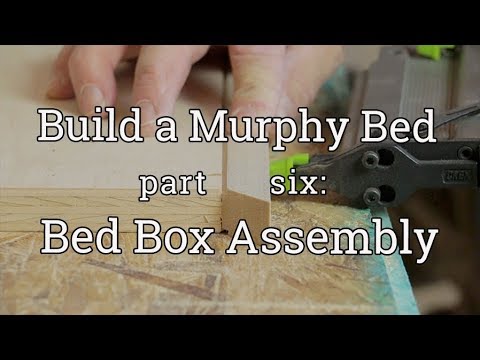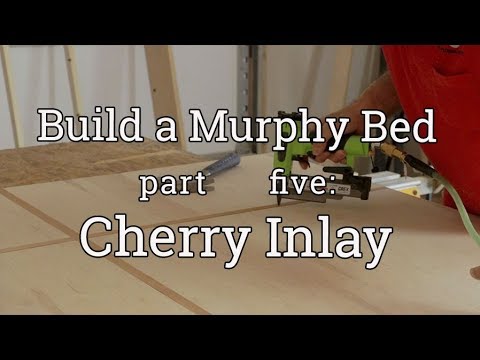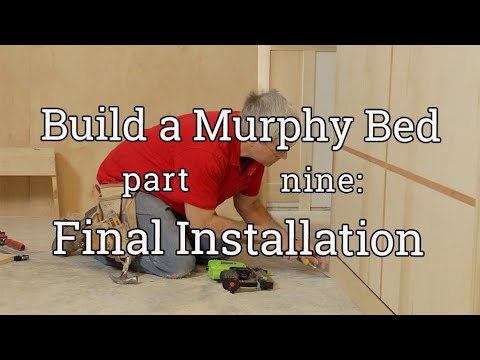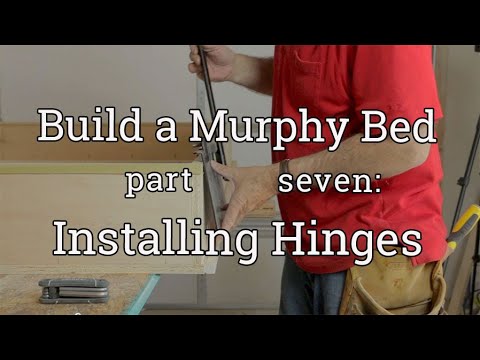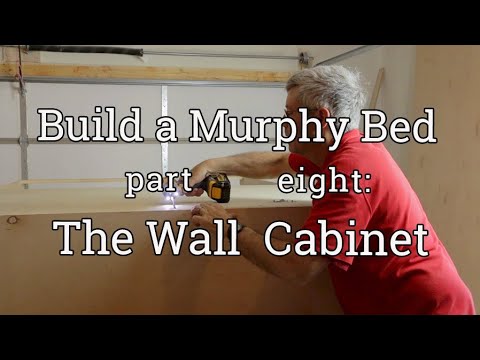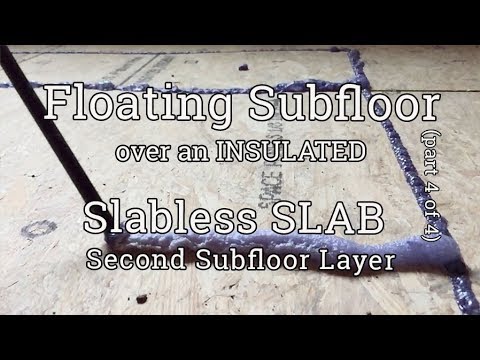The first layer of subflooring sits atop thick foam insulation and a plastic vapor barrier
The last time we checked in with Aarow Building, they were cutting thick foam so they could put in on the floor.
The thick foam is what the floating subfloor floats on top of.
“The Advantech is going to be installed in two layers. These two layers are going to be glued and screwed, they're going to be offset by 90-degrees and offset by two feet. So, no seams will line up with the layers below. “
—Jake Bruton, Aarow Building
The first step of any subfloor project is to move the pile of subfloor into a similar pile somewhere closer to the floor.
After blowing off the foam, they move sheets from the new pile into position.
“All of the same installation methods for Advantech still adhere, that little bit of space between the panels and everything. You can see here that we have a spacer strip, that quarter-inch of pine that's been ripped—between the sub-base and the Advantech. We have 95 feet in one direction in this house without an interruption.
So, per Huber's technical department, they prescribed this quarter-inch space. While everything will be glued and screwed together in the end, it may want to seasonally move, or move with humidity a small amount.
So, that sub-base that you can see, the half-inch OSB—the drywall will come down and sit on top of it but our trim will cover the face of it. So we don't have any concerns about it showing in the long run.
Just like this would be a foundation pour, with concrete, everything does have to come through in the right location, because after this layer, we have no opportunity to move it.
When it comes to cutting for penetrations—plumbing lines, supply and waste lines, the first layer, we're not terribly concerned with getting it perfectly cut, like a round hole around a round pipe. You can see that we did that with the foam as well, we cut around it and just spray foamed around it.
Here’s a sweet tip about scribbling numbers on a block of wood.
Orient the block of wood in the same direction as the sheathing. Harrison writes the numbers with a vertical or horizontal line indicating the direction of the measurement.
So, his cuts start at 13 inches from the edge, marked with a vertical line, and 21 inches from the end, marked with a horizontal one.
No arrows, words, or extra clutter needed.
The cutouts for pipes do not need to be precise, they can be ruff.
"Cutting everything at this point, we're just trying to get it so we can get the sheets together; we'll take care of a snug fit on the next layer up."
That covers the plumbing obstacles, but this house also had some conduit running under the subfloor feeding a couple of floor outlets.
The electricians cut a V-groove with a circular saw and they laid in a conduit underneath out floor assembly. That conduit is empty for the time being. We've blocked around the outlet boxes to keep people from running into them and to to hold them at the correct elevation.
There was a little bit of sag in them, so we wound up mounting those through their side into the next layer of Advantech to hold them at the perfect elevation. They still protrude 3/4 of an inch because we'll have hardwood in this home, so they still have a protector around them.
The guys place the last sheets and squeeze them tight. In the next segment, we’ll foam down some glue, flip sheets to the floor, and screw off for the rest of the day.
